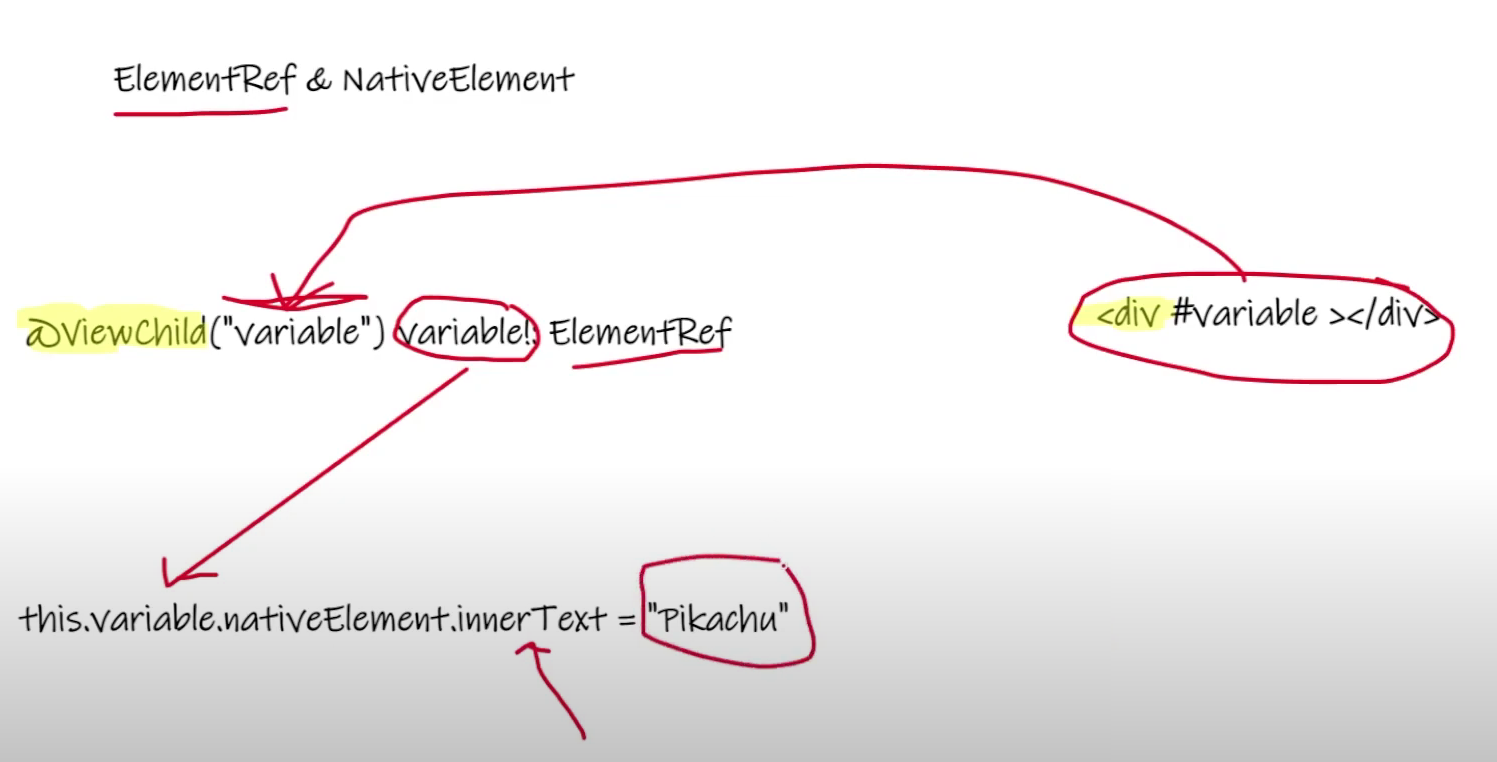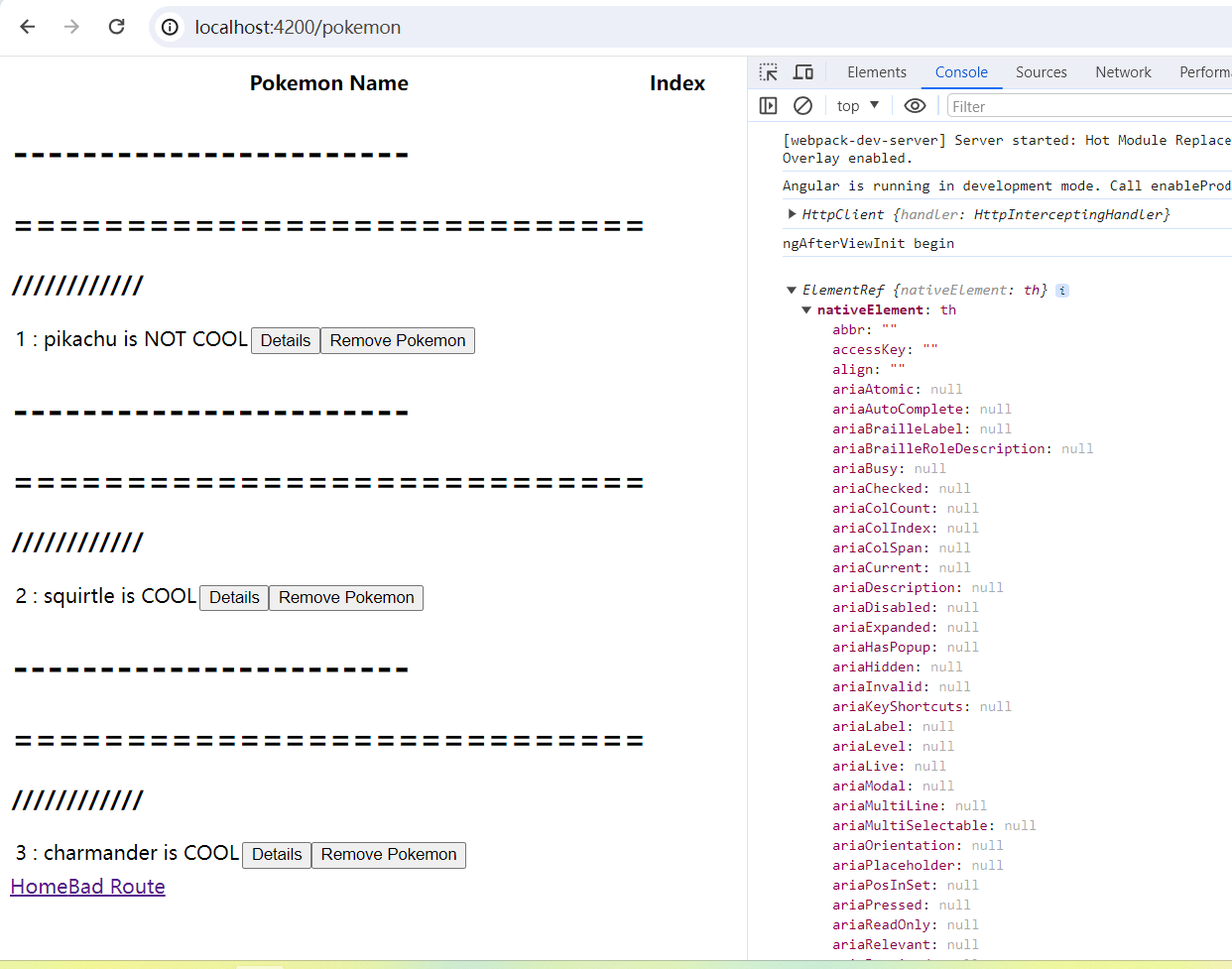chatgpt:
ElementRef 是 Angular 中的一个类,它用于包装对 DOM 元素的引用。它允许开发者直接访问与 Angular 组件关联的宿主 DOM 元素。
当在 Angular 中需要直接操作 DOM 元素时,可以使用 ElementRef。通常情况下,最好避免直接操作 DOM,而是使用 Angular 的数据绑定和指令。但在一些特殊情况下,比如集成第三方库或需要直接操纵 DOM 的特定功能中,ElementRef 可能会派上用场。
需要注意的是,直接操作 DOM 可能会破坏 Angular 的变更检测机制,因此在使用 ElementRef 时应该小心谨慎,并确保操作的是被封装在 Angular 生命周期和变更检测机制内的特定元素。
以下是一个简单的示例,展示了在 Angular 中如何使用 ElementRef:
import { Component, ElementRef, AfterViewInit } from '@angular/core';@Component({selector: 'app-example',template: '<div #myDiv>Some content</div>',
})
export class ExampleComponent implements AfterViewInit {constructor(private elementRef: ElementRef) {}ngAfterViewInit() {// 使用 ElementRef 获取宿主 DOM 元素const divElement: HTMLElement = this.elementRef.nativeElement.querySelector('#myDiv');// 在这里可以直接操作 DOM 元素divElement.style.color = 'red';}
}
在这个示例中,ElementRef 被注入到了 ExampleComponent 的构造函数中,并在 ngAfterViewInit 生命周期钩子中使用它来获取 #myDiv 的宿主 DOM 元素,并修改了其文字颜色。
使用元素引用(ElementRef)有一些注意事项。
绕过 Angular 的抽象层: 直接操作 DOM 元素可能会绕过 Angular 的变更检测机制,导致应用程序中的一些问题。Angular 的核心优势之一是其数据绑定和变更检测能力,直接操作 DOM 可能会破坏这种优势。
安全风险: 操作原始的 DOM 元素可能存在安全风险。例如,直接操作 DOM 元素可能导致潜在的跨站脚本(XSS)攻击,因此需要谨慎处理用户输入的数据。
跨平台兼容性: 直接访问 DOM 可能会使应用程序的跨平台兼容性降低。Angular 的抽象层使得应用程序更容易在不同的平台和环境中运行,但直接操作 DOM 可能会导致在特定平台上出现问题。
维护困难: 直接的 DOM 操作可能会导致代码变得更难维护。随着应用程序的发展和变化,直接与 DOM 交互的部分可能需要更频繁的更新和维护。
总体来说,虽然 ElementRef 提供了直接访问 DOM 元素的能力,但是在使用它时需要谨慎考虑这些注意事项,尽量避免直接操作 DOM,而是优先使用 Angular 的抽象机制和指令来管理视图。
Angular For Beginners - 26. ElementRef
ElementRef 总是与 @ViewChild 一起使用。
使用 @ViewChild 获取数据。
使用 ElementRef 操纵这些获取的数据是最快速,最简单,同时也是最危险的方式。

1. 避免在组件上使用 @ViewChild
虽然可以,但如果在组件上使用 @ViewChild,就不会获得所有 javascript 属性。
pokemon-list.component.html: <th> 元素添加 #pokemonTh:
<table><thead><th #pokemonTh>Name</th><th>Index</th></thead><tbody><app-pokemon-detail#pokemonRef*ngFor="let pokemon of pokemons"[detail]="pokemon"(remove)="handleRemove($event)"><h1>-----------------------</h1><h2>============================</h2><h3></h3></app-pokemon-detail></tbody>
</table>
pokemon-list.component.ts:
import {AfterViewInit,Component,ElementRef,OnInit,ViewChild,ViewChildren,
} from '@angular/core';
import { Pokemon } from 'src/app/models/pokemon';
import { PokemonService } from 'src/app/services/pokemon.service';@Component({selector: 'app-pokemon-list',templateUrl: './pokemon-list.component.html',styleUrls: ['./pokemon-list.component.css'],
})
export class PokemonListComponent implements OnInit, AfterViewInit {pokemons: Pokemon[] = [];@ViewChildren('pokemonRef') pokemonRef!: ElementRef;@ViewChild('pokemonTh') pokemonTh!: ElementRef;constructor(private pokemonService: PokemonService) {}// 新代码ngAfterViewInit(): void {console.log('ngAfterViewInit begin');console.log(this.pokemonTh);this.pokemonTh.nativeElement.innerText="Pokemon Name"console.log('ngAfterViewInit end');}handleRemove(event: Pokemon) {this.pokemons = this.pokemons.filter((pokemon: Pokemon) => {return pokemon.id !== event.id;});}ngOnInit(): void {// 填充 pokemons 属性// this.pokemons = this.pokemonService.getPokemons();this.pokemonService.getPokemons().subscribe((data: Pokemon[]) => {console.log(data);this.pokemons = data;});}
}2. Web 页面
Name 变成了 Pokemon Name, console 里还可以看到除了 innerText 之外的其他属性.



 Term expected` 报错的解决方法)
)


)

环境)






-计算最大乘积)



